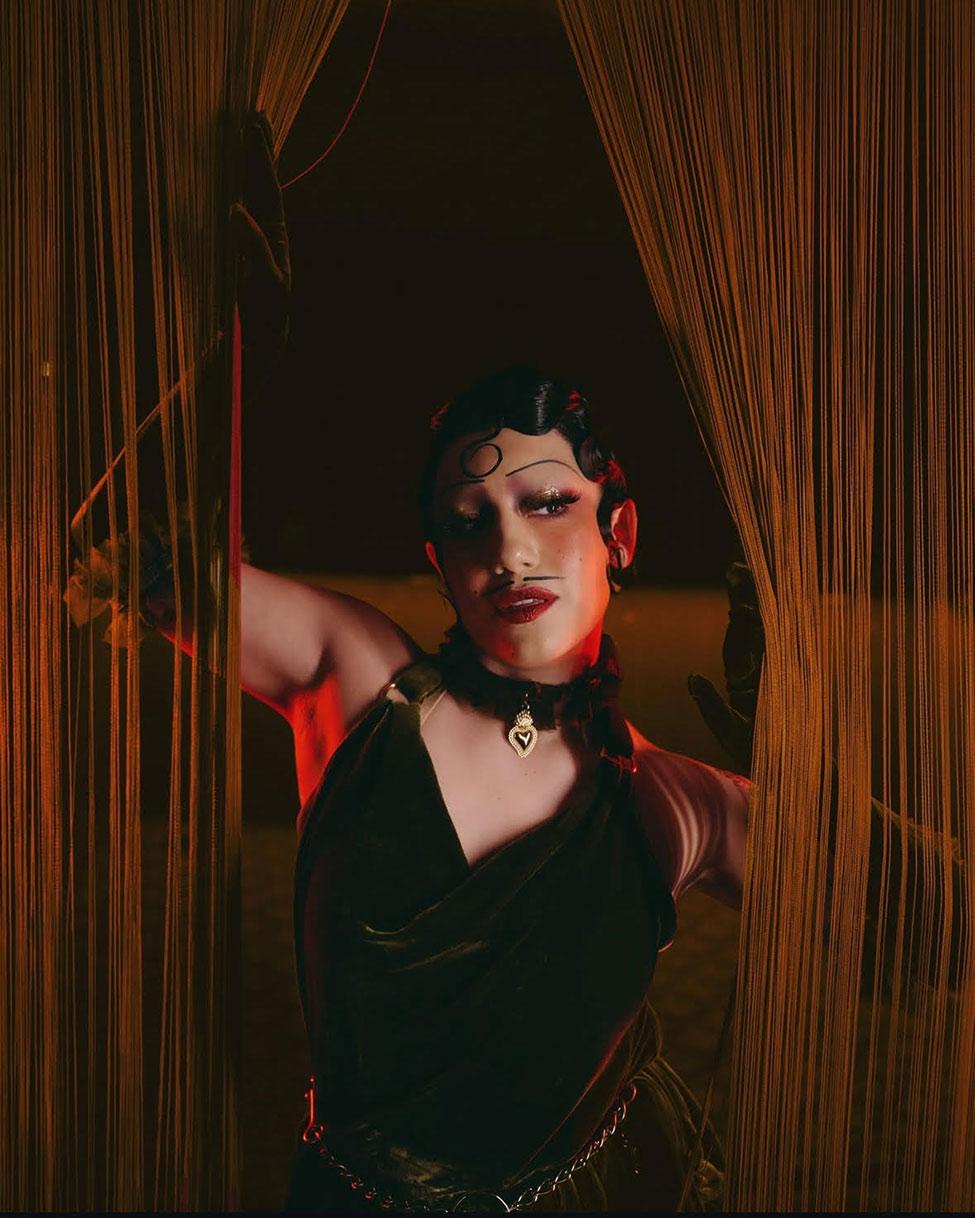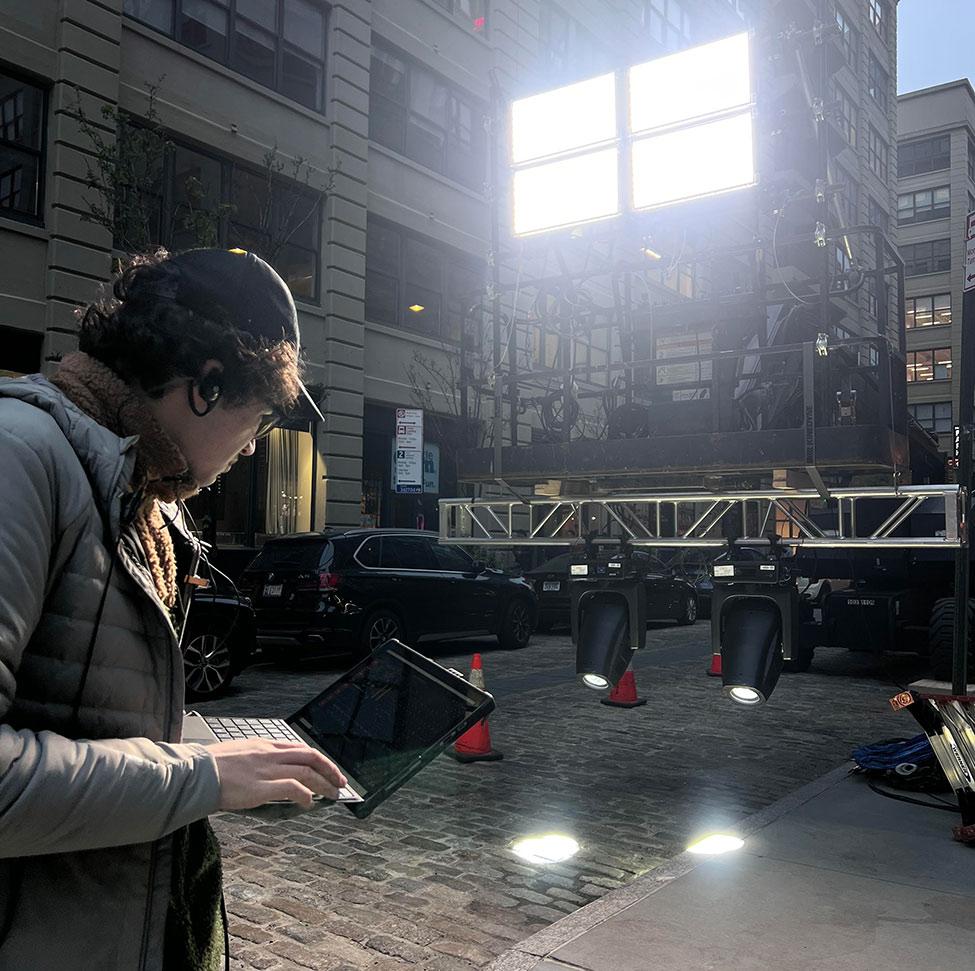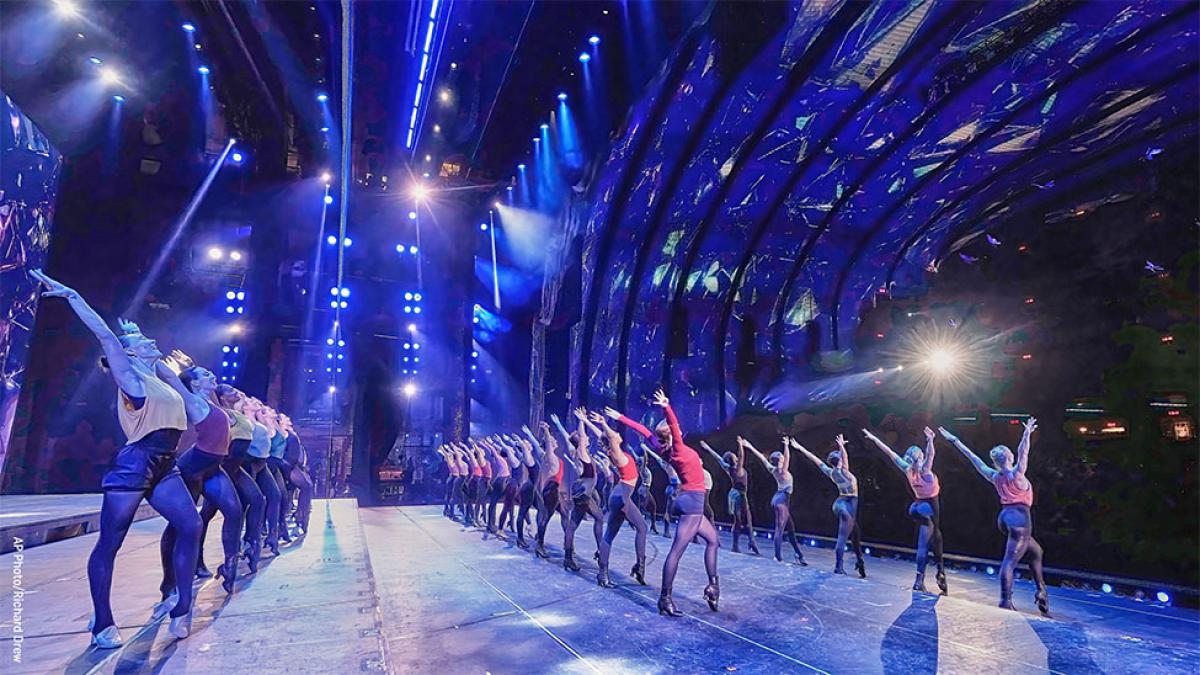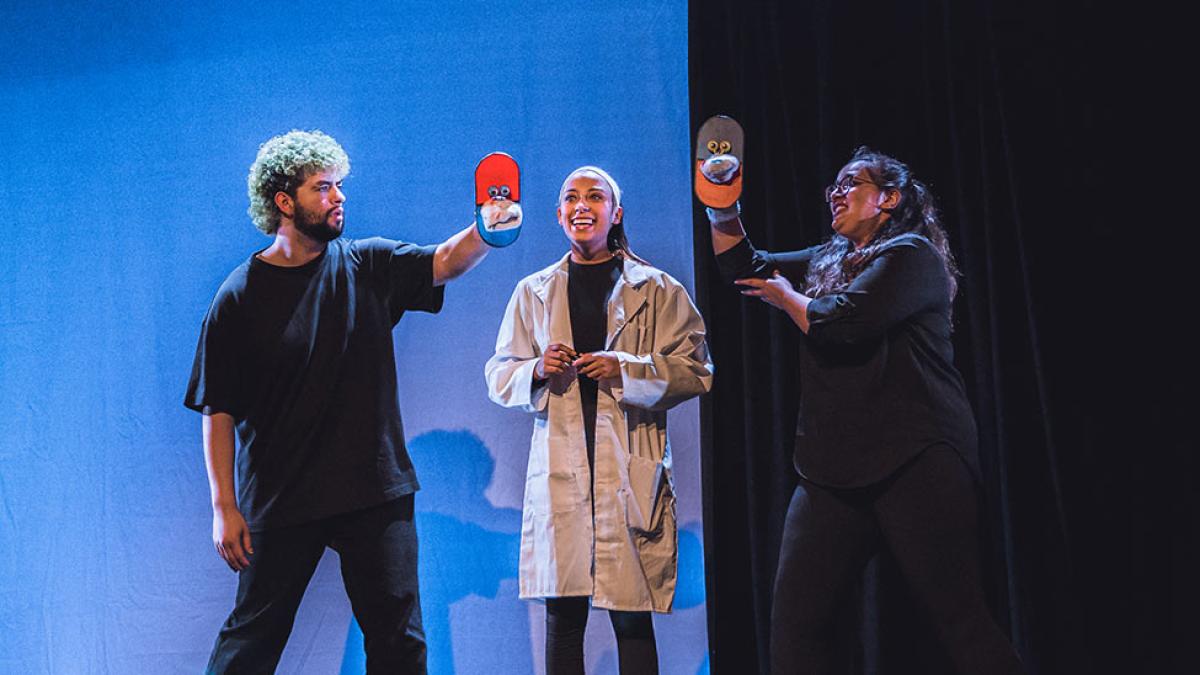
From Pace to the Spotlight: Inside New York City’s New Creative Powerhouse

Learning Broadway lines as the audience takes their seats. Designing a Spike Lee “double dolly shot” while Denzel Washington awaits his cue. Cartwheels for luck. Exams between rehearsals.
To the uninitiated, life as an entertainer can look chaotic. But to Pace University’s performing arts students and alumni, it’s all part of the script for life under the lights.
Since 2014, the Sands College of Performing Arts has been preparing the future of Hollywood, Broadway and beyond. The creative crucible of New York City is their classroom, and those who emerge are the dedicated practitioners, leaders, and changemakers shaping the future of stage and screen.
Students at Sands are more than understudies; they’re working professionals who are creating every day. For go-getters like Pace’s Gabriela Campo ’18, Griffyd Cole ’20, Jada Simone Clark ’22, and Mateo Lizcano ’26, that training has been their ticket to the top.
And with a new performance and training center about to open in lower Manhattan, the lights have never been brighter for a Sands graduate.
Risking it All
Among Sands’ core values is the belief that courage and creativity are reinforcing foundations for success. Without a willingness to risk failure, it’s impossible to embrace new opportunities.
It’s a lesson that Gabriela Campo took to heart.
In early 2018, Campo, just 22 and fresh from Pace with a degree in musical theater, was cast as a swing in the Broadway hit musical, The Prom. Her job—the one she trained for—was to cover eight ensemble parts and understudy two leads.
“It is never boring when I go to work,” the Los Angeles native told a reporter at the time. “I kind of feel like Cinderella. I get to go to the ball every night.”
One night, however, her Cinderella dream became all too real. With the audience streaming in, one of the lead ensemble members got violently sick. “It was places. It was standby. The orchestra was about to start, and she runs offstage and starts vomiting,” Campo recalled. “Everyone backstage was like, ‘Well, shit. Who do we put in there?’”

It wasn’t a role Campo was covering, but the stage manager turned to her anyway. “Can you do it?” he asked. Campo didn’t hesitate.
Years later, Campo concedes she didn’t really think about her answer. She was young, poised and confident, freshly anointed with credentials from one of the country’s top performance schools.
Within 10 minutes, she’d learned the lines. In less than 15, she was in costume, and moments later, she was on stage, making her Broadway debut in front of a packed house as Olivia Keating.
“That show shaped my career in a way,” Campo said. “I've been cast in at least two shows since then because of the reputation I earned that night.”
The foundation for Campo’s big break was laid during her years in youth theater in California, and reinforced at Pace, where she surrounded herself with casting-directors and classmates already performing in major productions. During her senior year, one of her professors was a casting director for The Prom. She was invited to audition.
Campo has since climbed her way up the playbill, appearing in the 2020 revival of West Side Story and Beetlejuice, and on television in Billions and FBI: Most Wanted. Most recently, she performed as Frenchy, and understudied Sally Bowles, in Cabaret at the Kit Kat Club. Next up, she’s set to appear in the stage adaptation of Girl, Interrupted, at The Public Theater.
“Pace attracts the kind of person who is willing to be a small fish in a big pond,” she said. “It takes a lot of courage to do that. I know that now.”
A Path Well Lit
For many young artists, graduating during a COVID-19 would have been more frightening than facing an audience with only a few minutes to memorize a part. Broadway was dark during the pandemic, stages empty, and opportunities scarce.
But for Griffyd Cole, a lighting designer and programmer who graduated magna cum laude in 2020 with a Bachelor of Fine Arts in Production and Design, being in New York when the city shuttered turned out to be a stroke of luck.
“Because I already had a network from my time at Pace, I was able to start working as soon as theaters opened again,” Cole said.

One of his first gigs was as an electrician at the Park Avenue Armory, which reopened with strict testing and socially distanced performances. Then, he got a call from a former colleague with an unexpected opportunity.
“A friend I’d met years earlier on a theater job needed someone for his TV show,” Cole said. That show ended up being the HBO mega-hit Succession. “It was my first TV gig as an electrician—and it just kept going from there.”
Cole’s versatility soon caught the attention of other producers. He just finished work on Darren Aronofsky’s upcoming film Caught Stealing and before that he was the lighting programmer on Spike Lee’s Highest 2 Lowest, starring Academy Award-winner Denzel Washington.
For Cole, Highest 2 Lowest was an opportunity to shine. One scene, toward the end of the film, stands taller than the rest.
“The singer A$AP Rocky had produced a song for the movie, and the director wanted this big, elaborate shot inside the Bronx County Courthouse with a bunch of moving lights and effects,” Cole said.
Cole delivered and earned a credit lighting Spike Lee’s “double dolly,” the director’s signature filmmaking technique.
Pace may not have taught Cole every trick in the book, but it did set him up with the confidence to excel, and the connections to soar.
Still, there is one downside to Cole’s rapid ascent in the industry: watching TV has become a professional hazard.
“It’s hard to work 10 or 15 hours on set and come home and watch more TV,” he said with a laugh. “When I watch something that I’ve worked on, I notice mistakes. But that’s only because I know what happened behind the scenes.”
Measuring Success
For the thousands of designers, choreographers, stage managers, directors, dancers, singers and actors who proudly wear the Pace blue and gold, Sands is synonymous with success.
In 2024, 92% of Sands bachelor’s degree graduates were working in their field of study, and many were leaving their marks on Broadway, where Pace is the fifth-most represented college in the nation, according to Playbill.
Established in 2014 within Pace’s Dyson College of Arts and Sciences, the Pace School of Performing Arts was the first new performing arts school in Manhattan in nearly 50 years. In just over a decade, it’s become a film, television, and theater powerhouse. It was renamed Sands in 2023.
Today, Sands’ alumni are working across the entertainment industry, and Pace graduates have earned credits from Aladdin to Wicked on Broadway, The Americans to The Voice on television, and Black Panther to Superman in Hollywood. Some of the biggest names in the business have worked with, studied at or graduated from Sands, including Chris Briney, Cooper Koch, Dominique Fishback, Jesse James Keitel, Michelle Borth, and Glenn Taranto.
Their success is no accident—it is the direct result of world-class instruction from faculty who live and breathe the industry every day. Students train under working professionals whose resumes span Broadway, Hollywood, and national television.
Susan Aston, who coached James Gandolfini to his Emmy-winning performances on The Sopranos, brings a master’s-level understanding of acting craft and emotional precision into every classroom. Former Joffrey Ballet principal dancer Scott Jovovich infuses his choreography and teaching with the same discipline and artistry that took him from ballet stages to Broadway’s Fosse and Jerome Robbins’ Broadway. Julie Lawrence-Edsell, a Yale School of Drama alumna and accomplished actor and director, grounds students in both the technical and human dimensions of performance. And April Bartlett, an Emmy Award-winning production designer for The Today Show, trains future designers to create with imagination and resilience.
This caliber of mentorship ensures that when Sands students step into the industry, they do so not merely prepared but already performing at a professional level.
Sands’ reputation as a breeding ground for talent is borne from its philosophy: a career in the arts begins the day students arrive, not the day they leave. By combining intensive training with a solid liberal arts foundation, and by encouraging students to work while they study, Sands has become one of the nation’s most respected proving grounds for creative careers.
Igniting the Firecracker
Two things drew Commercial Dance alumna Jada Simone Clark to Sands. Connections were key, and the Baltimore native knew New York was the only city for a promising young dancer with sizable dreams.
But even more important to Clark was Sands’ approach to dance education. Most programs that she’d considered expected dancers to fit a certain mold, to bend to pre-determined formulas, she said. Clark wanted a school that would encourage her individuality.
“When I dance, I light up,” she said. “When it came time to decide on schools, I knew that if I was going to last four years, I needed to be doing something that I cared enough about to dedicate my life to.”
“I was just looking for a place to continue to figure out who I was,” she said. “I didn't know my ‘form.’ I just knew I had more to learn before I hit the ground running.”

Clark began dancing when she was seven. Initially attracted to the athleticism of the craft, her affection grew as she matured, and the physical mixed with the creative.
“When I dance, I light up,” she said. “When it came time to decide on schools, I knew that if I was going to last four years, I needed to be doing something that I cared enough about to dedicate my life to.”
Still, Clark was realistic when she arrived at Pace in the fall of 2018. Dance is a niche profession. Not every dancer will land a job when they graduate. To increase her chances, she diversified, mastering several disciplines to make herself more marketable.
“I absorbed as much as I could before I was kicked out into the real world,” she said.
Clark landed in the “real world” even before she graduated, thanks to Pace’s offerings and its flexibility for working students. She spent part of her junior year in Los Angeles, studying dance and choreography for film. Connections made there landed her a lead role in Denver during her senior year, a five-week run with Rattlesnake Kate, her first musical.
Since then, Clark’s career has taken off. Called a “firecracker dancer” and “one to watch” by Dance Teacher magazine, she performed in the national tour of the Tony Award-winning Jagged Little Pill, and with the singer Doja Cat at the 2024 MTV video music awards. Her Broadway debut, on March 31, 2025, was as Helga in Cabaret at the Kit Kat Club.
Clark blossomed during her run in Cabaret, a period of financial stability and growth that fueled her confidence. Every night before places, she’d visit the front of house, say hello to the staff, and perform a signature warmup down the aisles.
“I’d do two cartwheels before every show,” she said. To calm the nerves and keep things loose. So expected was this act of athleticism that once, when Clark went on vacation, the stage manager filled in and did the cartwheels for her.
Shows close. Broadway is a business. Learning that lesson can be “tough,” she said, especially when it means the paychecks stop coming. When Cabaret went dark, in September 2025, Clark was back in the hunt, looking for her next gig.
Pace helped her here, too, she said. During school, every few months her dance classes would be led by a new teacher, which taught her how to read a room and give a casting director more of what they were looking for.
“Pace prepared us for the unpredictability of our industry,” Clark said. For that, “I’m grateful.”
Lights, Camera, Study!
What separates Sands from peers, students say, is its emphasis on careers. Undergraduates are encouraged to pursue opportunities as they study. Not internships or part-time apprenticeships. Full-time artistic commitments.
“It's almost required,” said Cole. “It puts you a couple steps ahead, because you're building your professional connections when you're in school. That jumpstart is one of the things I’m most thankful to Pace for.”

That flexibility is what convinced Mateo Lizcano to choose Sands. A professional actor since he was nine, Lizcano wasn’t about to put his passion—or his salary—on hold for four years. “Pace was a strategic choice,” he said. “Wherever I ended up going to school I needed to continue working.”
Lizcano, now a junior pursuing his BFA in acting, is living that dream. It hasn’t always been easy. In early 2025, Lizcano booked a role in the world premiere of A Wrinkle in Time, but with a catch. The theater was Arena Stage, in Washington, D.C., a six-hour journey from lower Manhattan.
“It puts you a couple steps ahead, because you're building your professional connections when you're in school. That jumpstart is one of the things I’m most thankful to Pace for.”
His professors didn’t hesitate. Arena Stage has produced 22 shows that transferred to Broadway, including Tony Award-winners Dear Evan Hansen and Next to Normal. Wrinkle was Lizcano’s ticket, and Pace wasn’t about to stand in his way.
Rehearsals for the June to July show began at the end of April, just as final exams were about to begin. “My first two weeks of Wrinkle were my last two weeks of sophomore year,” Lizcano said. To make it work, he traveled back to New York several times for classes and tests.
“I was basically doing my homework on the train,” he said. “I was studying for finals, writing papers, and recording presentations that I couldn't do in person.”
It took a lot of checklists to survive those difficult weeks, Lizcano said, not to mention forgiving directors and understanding professors. He was even able to write the missed rehearsals into his contract, to avoid any misunderstanding when he was absent for school.
“I've always put education above everything else,” he said. “But acting is a very close second.”
Doubling Down on the Arts
Each year, more than 600 undergraduates depart Sands with degrees in acting, performance making, dance, theater, production, and design. They enter an uncertain profession. While every actor knows that no show runs forever, threats to arts funding and shifting audience tastes have made it difficult to survive and harder to thrive.
“It's crazy to see Broadway veterans in the same position as me,” Clark said as she shifted from her role in Cabaret back to the job market. “It’s a humbling experience.”
“I went to Pace because I knew it would give me a competitive edge over other performers my age,” said Campo.
But at the same time, there’s never been a better time to entertain. Between 2022 and 2023, the arts and cultural industry added $1.2 trillion to the US economy, and many state and local organizations are filling the gaps amid federal cuts.
Sands College is doubling down on the positives. Next fall, the opening of One Pace Plaza East in Lower Manhattan will add new performance spaces, movement and dance studios, and film and media centers to Sands’ current facilities.
Alumni helped deliver Sands to this moment in its history. Without their ambition, drive and talents, Sands would be just another school. Instead, it’s a powerhouse of the arts—where careers are born and legends made.
“I went to Pace because I knew it would give me a competitive edge over other performers my age,” said Campo.
Some things never change.
More from Pace
At Pace University, we don’t just train dancers—we train Rockettes. More Rockettes than anywhere else. As the Radio City Rockettes celebrate 100 years of precision and performance, we’re celebrating the nineteen Rockettes and fifteen ensemble dancers who got their start right here at the Sands College of Performing Arts. Their journey from Pace studios to the Radio City stage is pure magic.
The future of the arts at Pace is under construction. Inside One Pace Plaza East, Sands College of Performing Arts students and faculty are preparing to create, collaborate, and perform in spaces built for bold ideas and bright lights.
Pace’s Sands College of Performing Arts and Deaf West Theatre are joining forces to make music education more inclusive. Their new artist-in-residence program introduces the first-ever ASL Music Theory Lexicon Project—giving deaf and hard-of-hearing artists equal access to the language of music while training all students to see access as innovation.


